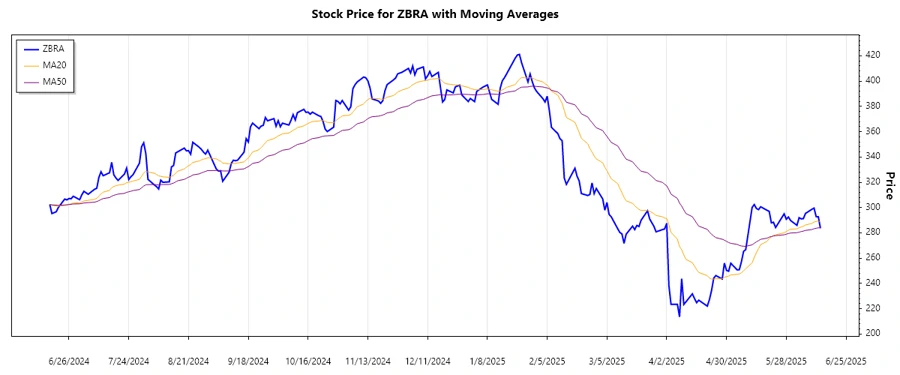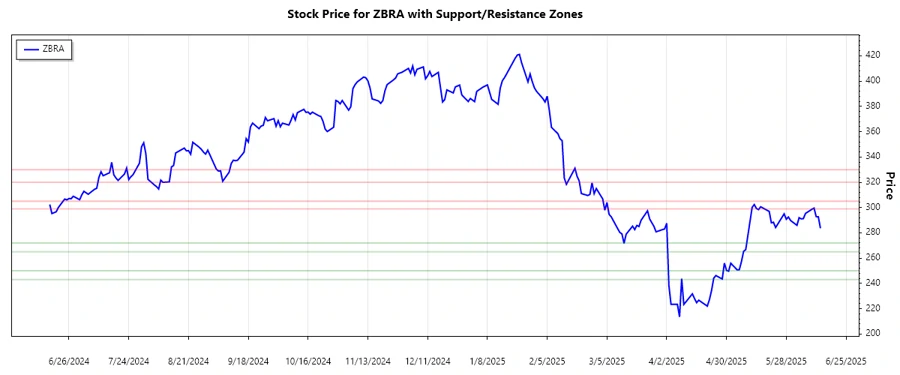June 15, 2025 a 09:03 am



ZBRA: Trend and Support & Resistance Analysis - Zebra Technologies Corporation

Zebra Technologies Corporation, represented by the ticker ZBRA, has shown notable fluctuations over the analyzed period. With a diverse product and service portfolio in enterprise asset intelligence, the company operates within a competitive landscape. Its stock prices have been influenced by market conditions and evolving demand for its innovative solutions. Analyzing the current data reveals critical insights into its price trends and potential support and resistance levels.
Trend Analysis
The historical data for Zebra Technologies Corporation (ZBRA) suggests significant price movements influenced by broader market conditions. Calculating the EMA20 and EMA50 based on the closing prices, we interpret the trends accordingly:
| Date | Closing Price | Trend |
|---|---|---|
| 2025-06-13 | 283.61 | ▼ |
| 2025-06-12 | 292.68 | ▼ |
| 2025-06-11 | 292.82 | ▼ |
| 2025-06-10 | 299.56 | ▼ |
| 2025-06-09 | 298.63 | ▼ |
| 2025-06-06 | 295.36 | ▼ |
| 2025-06-05 | 291.24 | ▼ |
Currently, the EMA20 is below the EMA50, indicating a dominant downward trend. This suggests bearish sentiment in the short to medium term.

Support- and Resistance
By analyzing the closing prices, two critical support and resistance zones have been identified:
| Zone Type | From | To |
|---|---|---|
| Support 1 | 265.00 | 272.00 |
| Support 2 | 243.00 | 250.00 |
| Resistance 1 | 299.00 | 305.00 |
| Resistance 2 | 320.00 | 330.00 |
The current price level is approaching the lower boundary of the first support zone, indicating possible stabilization before a reversal or further decline.

Conclusion
The evaluation of Zebra Technologies Corporation suggests a period of downward pressure with bearish trends. The existing support levels may offer stabilization, although breaking below them could lead to further declines. Investors should remain cautious and consider market signals for any signs of a reversal. The company’s diverse products provide resilience against market fluctuations, though external factors can heavily influence short-term price movements. Analysts must monitor market shifts and apply strategic considerations before making informed investment decisions.
